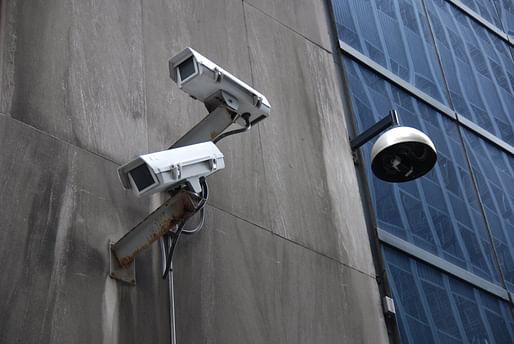

Like other professions, such as law and medicine, architects rely on technical publications to do our jobs. Thus, we frequently turn to volumes such as Architectural Graphic Standards, which is authored by The American Institute of Architects (AIA). Promoted by its publisher, Wiley, as “the architect’s Bible since 1932,” the $260 handbook is presented as “the written authority for architects.” Nevertheless, not all of the information presented in Graphic Standards is unbiased, or even that technically sound.
It was therefore with quite a bit of interest that I discovered, while recently leafing through my twelfth edition in search of a framing detail, that it contains a short article on “Crime Preventions through Environmental Design” (CPTED). Included in the third chapter on “Building Resiliency,” alongside “Sustainability,” “Good Practices in Resilience-Based Architectural Designs,” and “Lifecycle Considerations in Resiliency-Based Designs,” CPTED is a bit like architecture’s “Broken Windows Theory.”
Although the legal concept has now been widely discredited, its ideas on policing and law enforcement continue to influence the entire judicial system. They promote zealous prosecution of low-level or “quality-of-life” crimes. Beginning in the 1980s, the ideas continued to have purchase well into the 2000s in prominent policies such as New York City’s infamous Stop and Frisk. These ideas were first presented in a popular article, “Broken Windows: The police and public safety,” which was published in the March 1982 issue of The Atlantic.
Using strategies like “natural surveillance,” “legitimate activity support,” and “territorial reinforcement” to “protect three critical assets—people, information, and property,” the Graphic Standards article on CPTED cites the theory of “defensible space” propagated by architect Oscar Newman. Like the authors of “Broken Windows,” Newman used writing, media, and pseudoscience to influence policy and professional practice. His 1972 book Defensible Space: Crime Prevention Through Environmental Design, argued that the design of physical environments could either increase or decrease criminality.
Understood in the context of 1970s New York, the book was a response to fears of urban decline. Newman presented architectural principles as antidotes to all manner of social ills, most of which were the result of disinvestment and poverty. Nevertheless, Newman’s methods were hardly scientific. According to architectural historian Joy Knoblauch's 2020 book, The Architecture of Good Behavior: Psychology and Modern Institutional Design in Postwar America, his success, and the eventual adoption of his ideas, were won “without virtue of science but on the strength of charisma and writing.”
Critiques of Newman’s ideas have not been relegated to academia. In wake of last summer’s protests against police brutality, CPTED came under increased scrutiny in the popular press, as well.
Architect Bryan Lee Jr. wrote an article in Bloomberg City Lab, “America’s Cities Were Designed to Oppress,” that took direct aim at policies derived from Newman’s work, ideas that undergird the Graphic Standards article:
“While CPTED principles are said to help discourage crime by orienting building windows and entrances to aid in providing “eyes on the street” that monitor activity, in practice, this strategy can end up serving the same suppressive purpose as stop-and-frisk policing—to assure that anyone considered suspicious is made to feel uncomfortable.”
Is CPTED neutral? Should it be included in Graphic Standards alongside framing details? The AIA collects revenue for the sale of the book. Shouldn’t they have a responsibility to examine and vet all content, to ensure that it is not promoting outdated or ill-founded theories—especially if they may reinforce unequal treatment of people based on their race and class?
No Comments
Block this user
Are you sure you want to block this user and hide all related comments throughout the site?
Archinect
This is your first comment on Archinect. Your comment will be visible once approved.